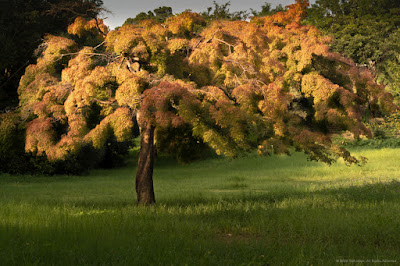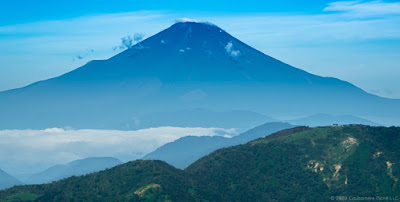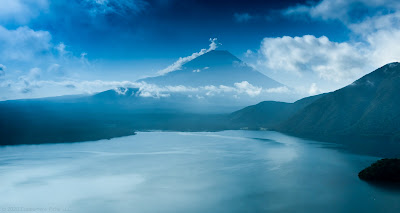Mt. Oyama is located in the city of Isehara of Kanagawa Prefecture and is easily accessible from Tokyo on the Odakyu Line or via the Tomei Expressway.
There is a promenade lined with shops and restaurants between the tourist information center and the trailhead at the base of the mountain.
At the end of the promenade, you will find the trailhead and the cable car station that first stops at Oyama-dera Temple, and then continues where it terminates at Oyama Afuri Shrine Shimosha.
The Odakyu Line runs trains, express trains, and buses from Isehara city up to the tourist information center at the base of the mountain.
Excellent source of info in English is here:
https://www.odakyu.jp/english/sightseeing/tanzawa_oyama/
Odakyu also offers a 1-day itinerary if you want to visit just for sightseeing without any heavy hiking gear or boots:
https://www.odakyu.jp/english/sightseeing/itineraries/mt-oyama-1day/
If you a car (private or rental), driving to the furthermost parking lot near the information center is another great option that is affordable. Parking costs only 1,000 yen for the whole day. However, the parking lot fills up quickly so you had better arrive as early as possible or try to find parking farther down from the mountain. Depending on the time of year and whether you are visiting on a weekday, during the weekend, or on a national holiday, it might be best to arrive before or near the time of sunrise.
When I arrived at the parking lot, it was around 1:30 a.m. Although I was the first person to the parking lot, by the time I left the car 20 minutes later, two more cars had already arrived!
Although there is a cable car that will take visitors up to the two main attractions holy sites of a temple and shrine, I ended up climbing all the way from the information center to the top the mountain for two reasons:
1) The cable car does not start operations until much later in the morning when summer temperatures have already started soaring making a hike to the mountain peak an extremely difficult challenge for me since I am not an experienced hiker who could easily withstand the heat, humidity, and steep slopes; and
2) Pets as large as my border collie cannot fit in the cages that are available for pets when taking the cable car. In the end, actually climbing the mountain was my only option.
Whether you visit Mt. Oyama for sightseeing or for mountain climbing, I highly recommend that you first visit the information center near the bus stop/parking lot closest to the trailhead. The center offers free foreign-language pamphlets that provide detailed histories of each attraction and useful maps on how to access all that Mt. Oyama has to offer including other attractions that are nearby.
Climbing up the mountain can be divided into 3 stages:
Stage 1
This stage begins at the tourist information center (near parking lots and bus stop) and takes you to the cable car station. At this stage there is a nicely paved promenade lined with many shops and restaurants stretching from the information center up to the first station of the cable car.
Stage 2
This stage begins at the cable car station and includes a stop at Oyama-dera Temple and ends at Oyama Afuri Shrine Shimosha.
For stage 2, you three options for making your ascent:
Option A
Take the cable car to the first stop to visit Oyama-dera Temple, get back on the cable car and go to the last stop to visit Oyama Afuri Shrine Shimosha.
Option B
From the trail head, which is located near the cable car station, take the Onna-Zaka trail which will lead you to Oyama-dera Temple, and continues onto Oyama Afuri Shrine Shimosha. This trail consists mostly of stone steps and winds back and forth for a more gradual climb up the mountain. The trail is well lit at night making it very easy to hike before sunrise when the temperatures are much cooler.
Option C
From the trail head, you can take the Otoko-Zaka trail, which also takes you to Oyama-dera Temple, and from there will take you to Oyama Afuri Shrine Shimosha. This trail also consists of stairs, but is much steeper and has no lighting. Other hikers I spoke to who took Otoko-Zaka were experienced hikers with lights to help them see the stairs, and were in enough physical shape to endure the steep climb.
Stage 3
The third stage covers the span from Oyama Afuri Shrine Shimosha (lower/sub-shrine) and ends at the peak of the mountain where you can finally reach the Oyama Afuri Shrine Honsha (upper/main shrine). This stage has only 1 option to reach the peak: a heavily washed out trail that is easy at some points and arduous at others where you have to navigate over small boulders while carrying a sufficient amount of water (and camera gear in my case).
I am not an experienced hiker, so I took my time, took many breaks, and did my best to avoid having a heatstroke as the sun quickly rose causing temperatures to soar. On my way down, I came across small children and elderly people climbing well after temperatures had risen, so the climb is doable for beginners if you are prepared with proper footwear and water.
Upon reaching the top, you can visit the primary shrine, Oyama Afuri Shrine Honsha, which houses the deity of the mountain. However, do not expect to see another grand shrine like that of the lower/sub-shrine, Oyama Afuri Shrine Shimosha. The upper shrine is the ultimate goal for a proper pilgrimage. The lower shrine is also important for a pilgrimage, but has more of a tourist site type of vibe.
Views from the peak are beautiful and depending on the weather and time of year, epic views of Mt. Fuji to the west and Shonan Bay to the east are easily visible.
However, bear in mind that climbing almost any mountain near Tokyo in August will almost always be a slight disappointment since the the snowcap on Mt. Fuji will have melted leaving with a dark, barren peak. The horizon will also be obscured by a milky haze that washes out all details of distant shores and mountain ridges. Sunrises are also washed out a bit, making it impossible to find light directly striking any nearby peaks or objects in the skyline.
Although I didn’t expect to capture any epic shots worth printing or adding to my portfolio, the experience was well worth it as I plan to visit again during a different season.
I would recommend this peak for landscape photography during autumn or spring. You will have a chance to meet other kind climbers where everyone greets each other and offers words of encouragement. Access from Tokyo is great in terms of time and cost. Even if you have no desire to climb to the top, taking the cable car to the temple and the sub-shrine is worth the visit!





















